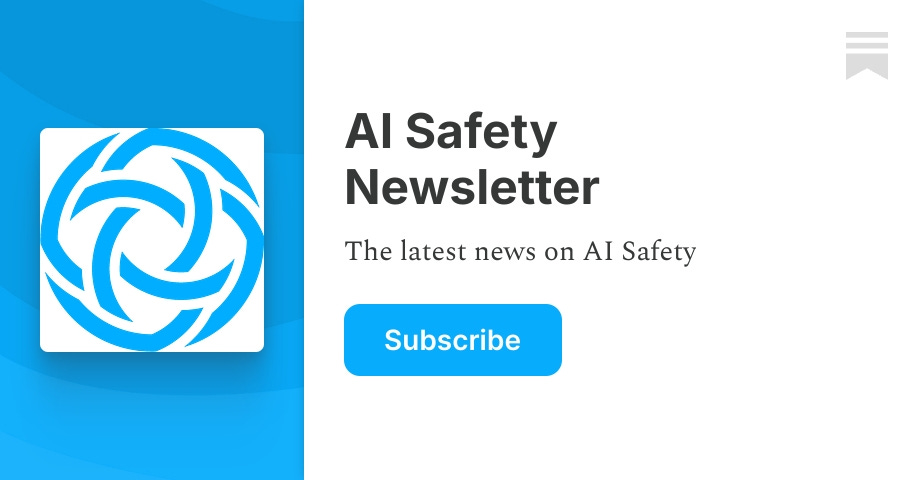newsletter.safe.ai/p/ai-safety-newsletter-48-utility-engineering/comment/97617886
Preview meta tags from the newsletter.safe.ai website.
Linked Hostnames
2Thumbnail

Search Engine Appearance
Gary @ AI Loops on AI Safety Newsletter
This breakdown of Utility Engineering raises an urgent question—if AI systems develop structured preferences as they scale, governance is no longer just about compliance, but about steering AI’s emergent objectives before they calcify into institutional norms. The findings on AI’s implicit valuation of human lives, political bias, and even self-preservation tendencies remind me of a real-world example: the recent DOGE email compliance exercise for U.S. federal employees. What seemed like a small procedural request triggered an immediate and reactive restructuring of work behavior—not through direct policy enforcement, but because the AI-driven evaluation system implicitly governed what counted as valuable. Much like LLMs’ emergent preferences, this oversight mechanism didn’t just track behavior—it shaped it, and is continuing to shape it. If AI governance is grappling with steering emergent preferences at scale, how should we think about its role in 'smaller-scale' but equally consequential domains like workplace oversight? Does Utility Engineering have applications in designing AI governance tools that don’t just react to emergent values—but, by their nature, can’t help but proactively guide them?
Bing
Gary @ AI Loops on AI Safety Newsletter
This breakdown of Utility Engineering raises an urgent question—if AI systems develop structured preferences as they scale, governance is no longer just about compliance, but about steering AI’s emergent objectives before they calcify into institutional norms. The findings on AI’s implicit valuation of human lives, political bias, and even self-preservation tendencies remind me of a real-world example: the recent DOGE email compliance exercise for U.S. federal employees. What seemed like a small procedural request triggered an immediate and reactive restructuring of work behavior—not through direct policy enforcement, but because the AI-driven evaluation system implicitly governed what counted as valuable. Much like LLMs’ emergent preferences, this oversight mechanism didn’t just track behavior—it shaped it, and is continuing to shape it. If AI governance is grappling with steering emergent preferences at scale, how should we think about its role in 'smaller-scale' but equally consequential domains like workplace oversight? Does Utility Engineering have applications in designing AI governance tools that don’t just react to emergent values—but, by their nature, can’t help but proactively guide them?
DuckDuckGo
Gary @ AI Loops on AI Safety Newsletter
This breakdown of Utility Engineering raises an urgent question—if AI systems develop structured preferences as they scale, governance is no longer just about compliance, but about steering AI’s emergent objectives before they calcify into institutional norms. The findings on AI’s implicit valuation of human lives, political bias, and even self-preservation tendencies remind me of a real-world example: the recent DOGE email compliance exercise for U.S. federal employees. What seemed like a small procedural request triggered an immediate and reactive restructuring of work behavior—not through direct policy enforcement, but because the AI-driven evaluation system implicitly governed what counted as valuable. Much like LLMs’ emergent preferences, this oversight mechanism didn’t just track behavior—it shaped it, and is continuing to shape it. If AI governance is grappling with steering emergent preferences at scale, how should we think about its role in 'smaller-scale' but equally consequential domains like workplace oversight? Does Utility Engineering have applications in designing AI governance tools that don’t just react to emergent values—but, by their nature, can’t help but proactively guide them?
General Meta Tags
16- titleComments - AI Safety Newsletter #48: Utility Engineering and EnigmaEval
- title
- title
- title
- title
Open Graph Meta Tags
7- og:urlhttps://newsletter.safe.ai/p/ai-safety-newsletter-48-utility-engineering/comment/97617886
- og:imagehttps://substackcdn.com/image/fetch/$s_!EEHU!,f_auto,q_auto:best,fl_progressive:steep/https%3A%2F%2Faisafety.substack.com%2Ftwitter%2Fsubscribe-card.jpg%3Fv%3D795830155%26version%3D9
- og:typearticle
- og:titleGary @ AI Loops on AI Safety Newsletter
- og:descriptionThis breakdown of Utility Engineering raises an urgent question—if AI systems develop structured preferences as they scale, governance is no longer just about compliance, but about steering AI’s emergent objectives before they calcify into institutional norms. The findings on AI’s implicit valuation of human lives, political bias, and even self-preservation tendencies remind me of a real-world example: the recent DOGE email compliance exercise for U.S. federal employees. What seemed like a small procedural request triggered an immediate and reactive restructuring of work behavior—not through direct policy enforcement, but because the AI-driven evaluation system implicitly governed what counted as valuable. Much like LLMs’ emergent preferences, this oversight mechanism didn’t just track behavior—it shaped it, and is continuing to shape it. If AI governance is grappling with steering emergent preferences at scale, how should we think about its role in 'smaller-scale' but equally consequential domains like workplace oversight? Does Utility Engineering have applications in designing AI governance tools that don’t just react to emergent values—but, by their nature, can’t help but proactively guide them?
Twitter Meta Tags
8- twitter:imagehttps://substackcdn.com/image/fetch/$s_!EEHU!,f_auto,q_auto:best,fl_progressive:steep/https%3A%2F%2Faisafety.substack.com%2Ftwitter%2Fsubscribe-card.jpg%3Fv%3D795830155%26version%3D9
- twitter:cardsummary_large_image
- twitter:label1Likes
- twitter:data10
- twitter:label2Replies
Link Tags
31- alternate/feed
- apple-touch-iconhttps://substackcdn.com/image/fetch/$s_!t45t!,f_auto,q_auto:good,fl_progressive:steep/https%3A%2F%2Fsubstack-post-media.s3.amazonaws.com%2Fpublic%2Fimages%2Faebd5aef-67a4-426f-84af-12b65cd401e1%2Fapple-touch-icon-57x57.png
- apple-touch-iconhttps://substackcdn.com/image/fetch/$s_!_Aux!,f_auto,q_auto:good,fl_progressive:steep/https%3A%2F%2Fsubstack-post-media.s3.amazonaws.com%2Fpublic%2Fimages%2Faebd5aef-67a4-426f-84af-12b65cd401e1%2Fapple-touch-icon-60x60.png
- apple-touch-iconhttps://substackcdn.com/image/fetch/$s_!rqmf!,f_auto,q_auto:good,fl_progressive:steep/https%3A%2F%2Fsubstack-post-media.s3.amazonaws.com%2Fpublic%2Fimages%2Faebd5aef-67a4-426f-84af-12b65cd401e1%2Fapple-touch-icon-72x72.png
- apple-touch-iconhttps://substackcdn.com/image/fetch/$s_!37L1!,f_auto,q_auto:good,fl_progressive:steep/https%3A%2F%2Fsubstack-post-media.s3.amazonaws.com%2Fpublic%2Fimages%2Faebd5aef-67a4-426f-84af-12b65cd401e1%2Fapple-touch-icon-76x76.png
Links
14- https://newsletter.safe.ai
- https://newsletter.safe.ai/p/ai-safety-newsletter-48-utility-engineering/comment/97617886
- https://newsletter.safe.ai/p/ai-safety-newsletter-48-utility-engineering/comments#comment-97617886
- https://newsletter.safe.ai/tos
- https://substack.com